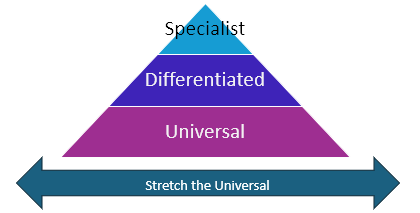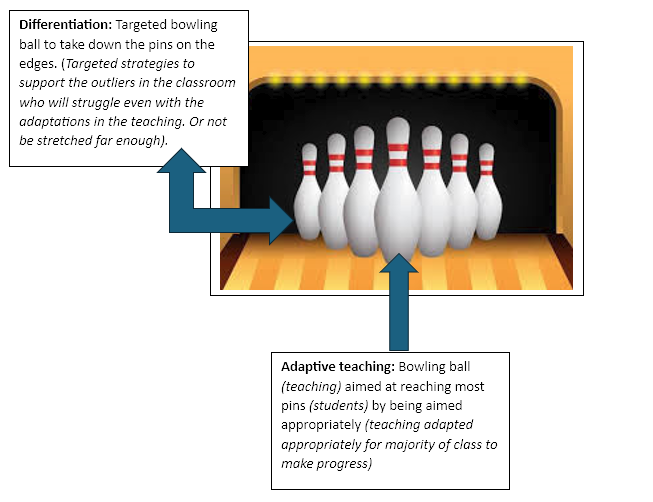April Blog 2024
When I delivered training on adaptive teaching back in October, we used research from the EEF on what it could look like for teachers in the classroom. At the time though, it was felt that adaptive teaching was just a new term to replace differentiation. However, having persisted and done further research and also having attended a very good seminar at the ASCL conference in March this year, I can now see how adaptation and differentiation are actually quite different, and I just want to explore this a bit with you in this teaching and learning blog.
If you look at Appendix 1 attached to this blog- you will see the document, we issued on the October training day as a clear guide to what adaptive teaching looks like. The points on this document absolutely stand true as an excellent guide with one tiny alteration to the third bullet point right at the top of the document, where previously it had said ‘targeted support for students who are struggling’, it now says ‘to ensure the active engagement of all learners in the classroom’.
The reason for this slight tweak is for the following reason. If you look below, you will see that I have created a graphic to try and explain visibly the difference between adaptation and differentiation. Adaptation is where you adapt the learning for all the learners in your class. Differentiation is where you have to have specific strategies in place to support those who might be progress outliers in your class, either because of cognitive barriers or because of attendance or behavioural issues. The bowling alley analogy, sums this up very well.
Difference between Differentiation and Adaptive teaching

Adaptive= is adapting the curriculum or the lesson resources for the whole class (can be where you adjust a teaching resource to fit with how your class learns best, can be revisiting certain areas of information to allow for strong recall, can be dropping some tasks out or adding some tasks in.)
Differentiation= targeted support in the classroom (can be the order in which you live mark, can be a coaching table, can be how the TA supports in the classroom, can be a different level of depth to what other students in the class might be reaching, can be different resources or different exercises)
Specialist= interventions and higher-level support offered through the SEND team.

So, when you look at the Adaptive Teaching guide all the points remain valid as they focus on key strategies and teaching pedagogy you would deploy to ensure the engagement of the various students that make up your class.
To understand how to provide differentiation in your class for progress outliers which will require further thought and intervention, I have now created a separate guide which is Appendix 2.
Also connected to differentiation is the role of the TA in your classroom. If you have a TA supporting you with a class this provides a great opportunity for differentiation to be taken to a different level. To help with this, I have attached as Appendix 3 the Vision for the Effective Deployment of TA’s that you contributed to in the Spring term of 23. In this vision, within the teacher section it clearly outlines that the teacher should be actively working to support the lowest attainers in the classroom (differentiation), along with live marking to give dynamic feedback to these same students (differentiation). The TA is deployed to support and assist the learning, by checking on the progress of other students in the classroom and feeding back to the teacher where there might be gaps in understanding, thereby enabling the teacher to adapt the lesson (adaptation) to ensure the correct reteach of material that has not been properly understood in depth by the class.
Take your time to look at all the points on the vision document for TA deployment and try and assess how confident you are, that this vision is being put into action in your classroom, with the TA’s you work with. Likewise, TA’s, think about how confident you feel with the vision of your role and what areas you think you might need support with.

